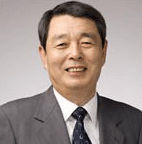

How has textile industry in Japan transitioned in span of a century of your Group's existence, and in what ways your Group reengineered itself to that tune?
The modern textile industry in Japan comes from the operation of the private spinning company in 1882. In early period of 1900’s, the companies which would be the predecessors of the current synthetic fiber manufacturers were established, and the textile developed as a key industry of Japan. After World War II, Japan entered an age of high economic growth, and in the first of 1960, the textile became the leading industry in Japan. After 1970’s the Japanese textile became worse by trade friction, oil crisis, strong yen and rise of Asian Countries. The import of textile goods to Japan increased. Afterwards by an improvement of the production technology and the price competitiveness in China and Asian Countries, the import from the area increased more, and the difficult situation of the Japanese textile continues.
Nisshinbo Industries, Inc. promoted the switch to a non-textile business, the diversification of the management and the development of the high-added value products at the same time to plan the business reorganization such as the reduction of domestic facilities and the transfer of facilities to the foreign countries in textile business.
What is your impression about current ongoings in this industry world wide?
The world textile industry moves around China and Asian Countries, so we have to pay attention to the local trend concerned with production and consumption. On the other hand, the retail of textile products in developed nations such as Europe, America and Japan is still poor.
How would the trend of shifting managerial resources to non-textile divisions by Japanese textile manufacturers bode for players of your kind?
This is a regrettable omen. However, the reorganization of the resources including human resource is unavoidable, if there are no profits in the textile business.
What is current scenario in Denim industry of Japan?
The market situation of Denim business in Japan is not good generally. Furthermore, low-pricing of product advances and the denim sold at US$10 around becomes the center of attention. Although this tendency will be improved some day, it cannot be expected to return back to the previous price. A strengthening of the power corresponding to a price is important.
Nisshinbo Denim is Differentiated Commodities. We have denim containing banana fiber, paper, cupra, and a liquid ammonia treatment denim as well as soft stretch denim etc.
Is M&A a mainstay strategy for your Company?
M&A is one of our strategies. We expand our business by the best method appropriately.
How is your corporate walk aligned to ecology course?
Environmental problems are now one of the greatest threats facing all humankind in common. For us, approaches to the environment represent actual practice of our management commitment to contribution to human society through our business activities, and are also part of our mission. We are going to mount an all-out effort to develop and market environment-friendly products as a task to be shared by all members of the Nisshinbo Group.
#######DISCLAIMER: All views and opinions expressed in this column are solely of the interviewee, and they do not reflect in any way the opinion of Fibre2Fashion.com.